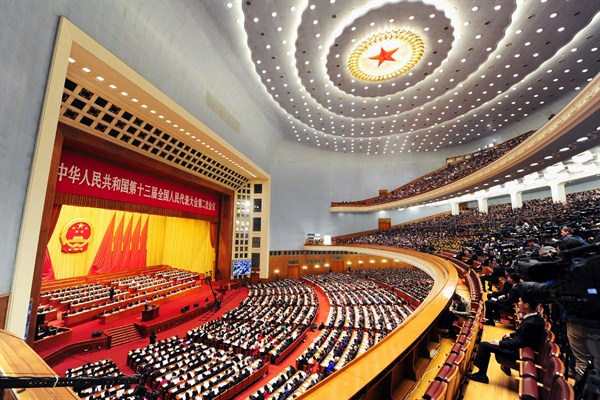Editor’s Note: Every Wednesday, WPR Newsletter and Engagement Editor Benjamin Wilhelm curates the week’s top news and expert analysis on China.
The National People’s Congress, China’s legislature, began its annual two-week session Tuesday in Beijing. Two days before that, the Chinese People’s Political Consultative Conference, a government advisory body, kicked off its own annual meeting. The combined gathering, known as the “two sessions,” is the biggest event on the country’s political calendar. It is an opportunity for China’s rubber stamp Congress to formally endorse proposed legislation, and it provides a platform for senior government figures to dictate priorities. The reports, speeches and press conferences provide a rare opportunity to glean a sense of direction from the notoriously secretive Chinese Communist Party.
On Tuesday, Premier Li Keqiang, the No. 2 official in the Communist Party, delivered the government work report, a comprehensive policy outlook for the year ahead. On the economy, Li sounded a cautionary note, telling the 3,000 assembled delegates that the government forecasts growth of between 6 and 6.5 percent this year, but that this would be a “tough struggle” to achieve. The target range is down from the 6.6 percent recorded last year, which itself marked a three-decade low. Many economists contend that China’s true growth rate is significantly lower than what official figures indicate.

